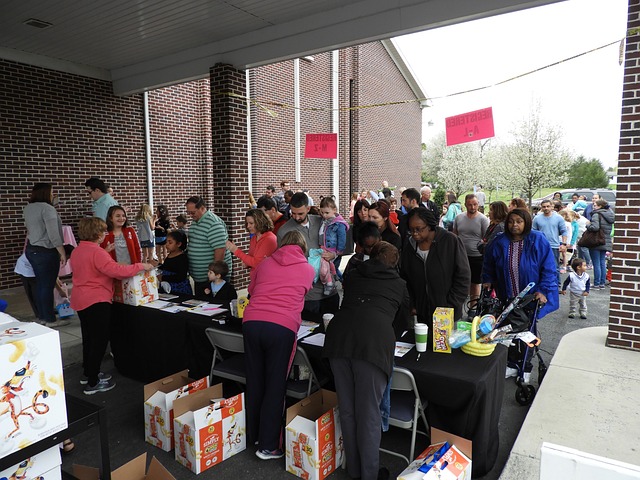
New Nonprofit Finance Fund Survey
07.01.2025 | Linda J. Rosenthal, JD

It’s not the first time there’s been a push in Congress to eliminate the shocking disparity between the mileage amount that a business driver ($.65.5/mile) may deduct and the rate available ($.14/mile) to a nonprofit volunteer.
Last year, a bipartisan pair of U.S. representatives – Reps. Pete Stauber (R-MN) and Angie Craig (D-MN) – sponsored a bill to establish parity. But it failed.
This year, mere days after the close of the U.S.’s annual National Volunteer Week (April 16-22), the same Congressional duo reintroduced the 2022 measure. See Stauber, Craig Reintroduce Legislation to Support Volunteer Drivers (April 28, 2023), Press Release, stauber.house.gov.
The title of the legislation is the “Volunteer Driver Tax Appreciation Act of 2023.” The text of the 2-page bill is here, The good news is two-fold, if the measure passes. First, It will raise the volunteer mileage-deduction rate to equal the business-mileage amount in effect. Second, it will be effective, retroactively, to cover mileage taken after December 31, 2022.
But, as is so often the case where a few paltry breadcrumbs are dropped in the path of the nation’s nonprofits, there is a condition. The upward-adjusted mileage rate applies only if the volunteer driver is transporting at least: (a) one other person or (b) property on behalf of a 501(c)(3) organization.
Will this bill gain traction in the current Congress? Who knows. Tipping the scale in favor of passage of the Volunteer Driver Tax Appreciation Act of 2023 is that Representatives Stauber and Craig have drummed up impressive backing for it. See “List of Supporters”: dozens of Minnesota nonprofits along with the National Council of Nonprofits, Independent Sector, American Red Cross, Meals on Wheels America, and other influential national organizations. On board as well is the California Association of Nonprofits and the parallel state associations of nonprofits around the United States.
Supporter Dawn Simonson, President & CEO, Trellis, and Co-chair, Volunteer Driver Coalition, explains: “This legislation seeks to strengthen a lifeline for older adults, particularly in rural areas.” These people “… depend on volunteer drivers for rides to medical appointments and essential shopping trips. Volunteer drivers should not be penalized for helping members of their communities.”
Congressman Stauber adds: “Volunteer drivers are crucial to our rural Minnesota communities and to our seniors, as they help deliver meals and provide transportation for healthcare services. It’s critical that we support [them] while they provide these invaluable services ….Volunteering is a selfless act, and our volunteers should not be penalized for their service.”
This reintroduced legislation at the national level is the least that should be done to combat a worrisome and rapidly accelerating trend for the nonprofit sector in the United States.
A national shortage of volunteers for nonprofit organizations and activities has been – and continues to be – at a crisis level. See, for instance, ‘There’s a huge need’: Nonprofits face shortage of volunteers (April 17, 2023) Thalia Beaty and Glenn Gamboa, Associated Press. Volunteer participation has been declining in recent decades. It is now accelerating for a number of demographic, economic, and other reasons.
But most troubling – and dangerous – is that the nonprofit community has been largely ignoring the danger signs. See Volunteers are the Bees of Our Sector – And They’re in Trouble (April 2022, updated April 2023) Jan Masaoka, California Association of Nonprofits. Ms. Masaoka compares our (ongoing) lackadaisical attitude on this topic to society’s just recent wake-up call in connection with the near-extinction-level decline in the world’s bee population. “Most of us have only recently begun to appreciate the crucial role bees play in pollinating nearly one-third of our food crops. And what a shame that it’s taken an international crisis of bee death to get us to finally pay attention.”
“In the nonprofit sector, volunteers are our bees,” she adds. Volunteers “[contribute] some 22 percent of all nonprofit hours worked,” but they are “often overlooked and even held in disdain by paid nonprofit staff.” One explanation is that as “nonprofit staff have fought to be seen as professionals, we have become less enthusiastic about celebrating and championing volunteers.”
Similarly, on the part of funders, there is too little attention. Although foundations demand data about many aspects of a nonprofit’s operations and activities, there are few inquiries about volunteers.
More to the point, “… there are shockingly few articles about [volunteers] in nonprofit journals or news sites, or workshops addressing the issue,” says Jan Masaoka. “If we take volunteerism for granted the way we have taken bees for granted, our nonprofit community — and the work we do — is surely in trouble.”
Much more needs to be done in public policy “related to volunteerism.” That includes “… strengthening volunteer immunity laws and allowing all types of volunteer time to be included in audited financial statements.
But right now, there is work to be done on the bill now pending in Congress. The “Volunteer Driver Tax Appreciation Act of 2023” is an opportunity to “amend a tiny but symbolic bit of discrimination against volunteers: volunteer mileage rates.”
– Linda J. Rosenthal, J.D., FPLG Information & Research Director
